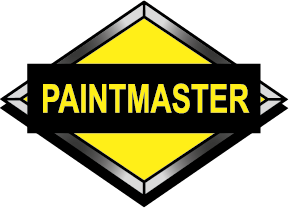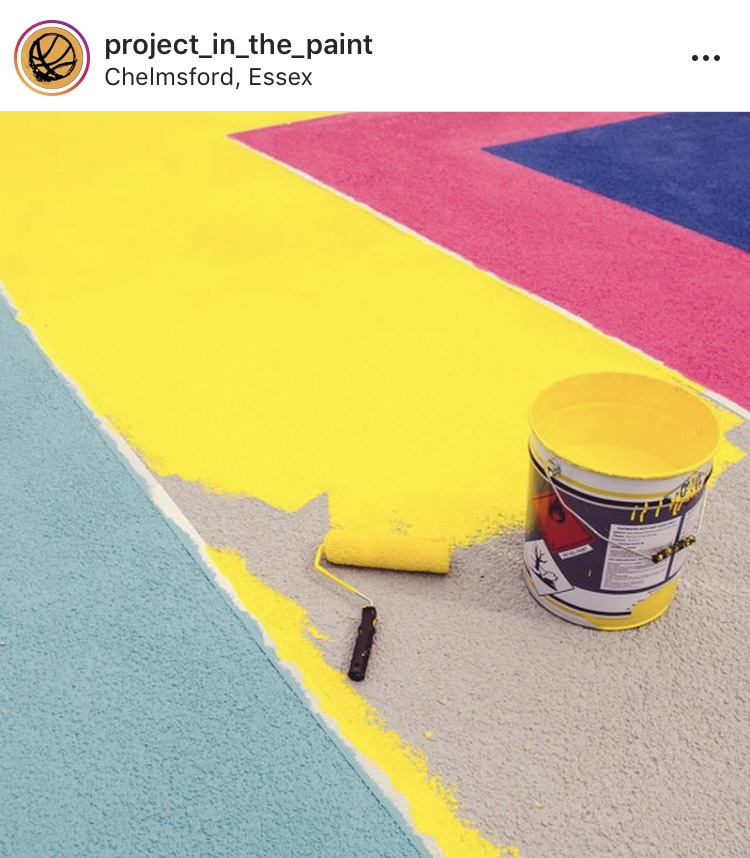
One of the best things to do when the sun is out is a bit of outdoor sport. But when it’s damp and gloomy, suddenly fields are out of the question. Unless you’re a swimmer, you’re stuck with sports courts. This Sports Court Painting Guide helps you add some light and inspiration to the sporting environment.
Outdoor tennis and basketball are always fun, even when it’s cold and gloomy. You also have a wide choice of indoor sports, including:
- Indoor Tennis
- Indoor Basketball
- Netball
- Volleyball
- Badminton
- Squash
- Dodgeball
- 5-a-side Football
Whatever the weather, a quality sports court is great for a workout.
However, if the court looks as dull as the grey skies you’re trying to avoid, it can dampen the spirits as much as winter drizzle.
Get rid of the gloom and leave it to Paintmaster to help you brighten up your tired courts!
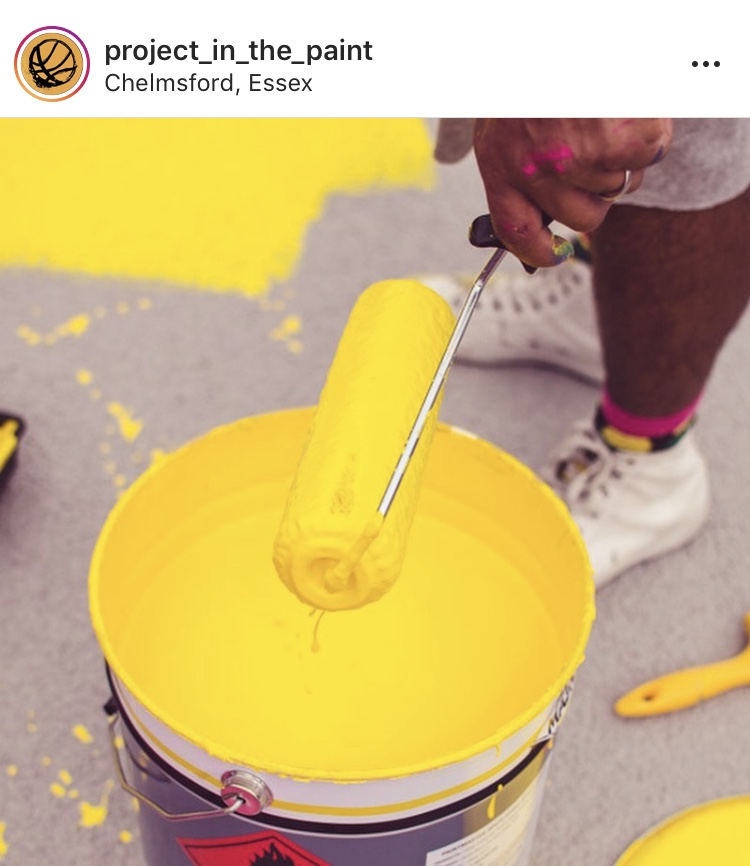
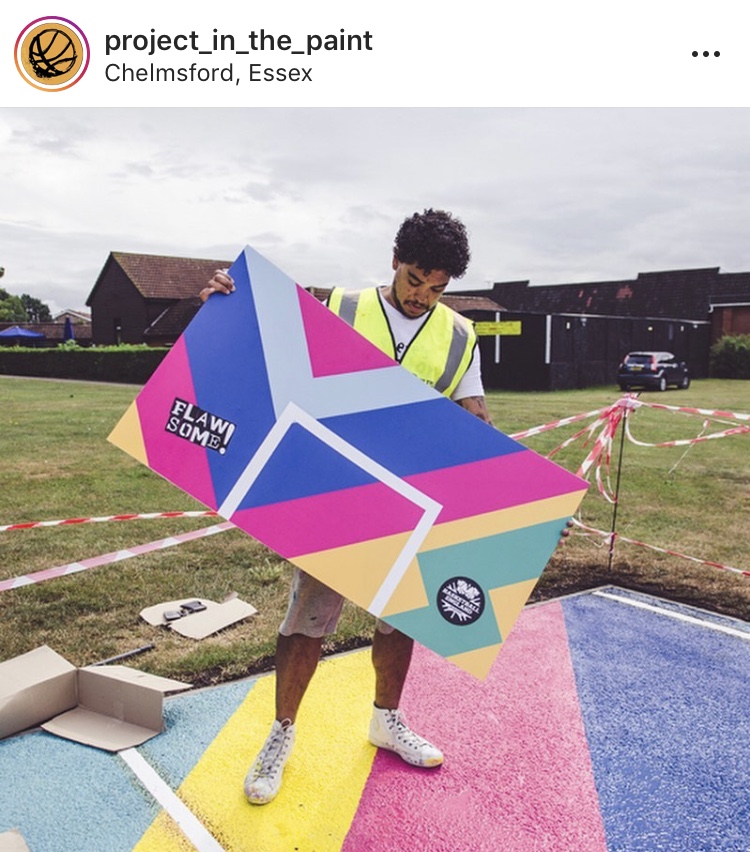
What Kind of Paint do you use on Tennis Courts?
Tennis courts need paint that is hard-wearing and doesn’t reflect sunlight. Acrylic paint provides the toughness and is low sheen to keep the colour bold and nonreflective.
You can also use epoxy, latex, or oil-based paints, but they don’t provide the same colour variety, and don’t work well on all surfaces. For the best all-rounder, acrylic tennis court paint is all you need.
If you want to reduce slippiness, you can mix acrylic paint with a silver sand or builders sand. This is essential for outdoor courts, especially if children use them. It’s a similar case for playground painting as they use similar materials.
What are Tennis Courts made of?
Most domestic courts are made of macadam, rubber, concrete, or acrylic, all of which benefit from a few coats of acrylic paint (the clue is in the name for acrylic courts!).
All except concrete surfaces are porous and therefore water-resistant, a quality acrylic won’t affect how well it works. Replacing these surfaces can be very costly and time-consuming, so applying a fresh coat of paint will rejuvenate them at a much more affordable price.
What Colour should Tennis Courts be?
When it comes to the colour, Paintmaster have every shade you can imagine. We provide the paint for worldwide basketball art projects, and they are perfect for tennis courts too. Everything from muted greys and blues to Barbie-girl pink, Paintmaster have a tin that will make your courts stand out.
For your white lines, acrylic is still the best choice. We recommend painting them with a roller and stencil, or a line applicator for the professional look.
If you have multiple courts to paint, you can make them uniform or different colours. This can be helpful for tennis clubs who split their members into skill-based groups, or similarly for schools if they use a sports centre.
How much Paint is needed for Tennis Courts?
For a standard size court (indoor courts are sometimes smaller) you will need 11x 20 litres of paint for two coats. If there is a runoff area, or if the surface is more worn out, you may need more. Always calculate your surface area carefully before you place your order and get an extra tin or two for practice and correcting any mistakes.
For your lines, we recommend a 5litre tin of white acrylic paint. For multi-use courts there will be extra lines to mark out, so it’s worth having some spare. And remember, you will need two coats for the lines too!
Painting Basketball Courts
Painted basketball courts are becoming more and more popular in the UK. They are made of similar materials to tennis courts (and in sports centres they can be used for both) so acrylic paint is still the ideal choice.
Other types of paint may be more wear-resistant but will lack the bold colours that only acrylic can offer.
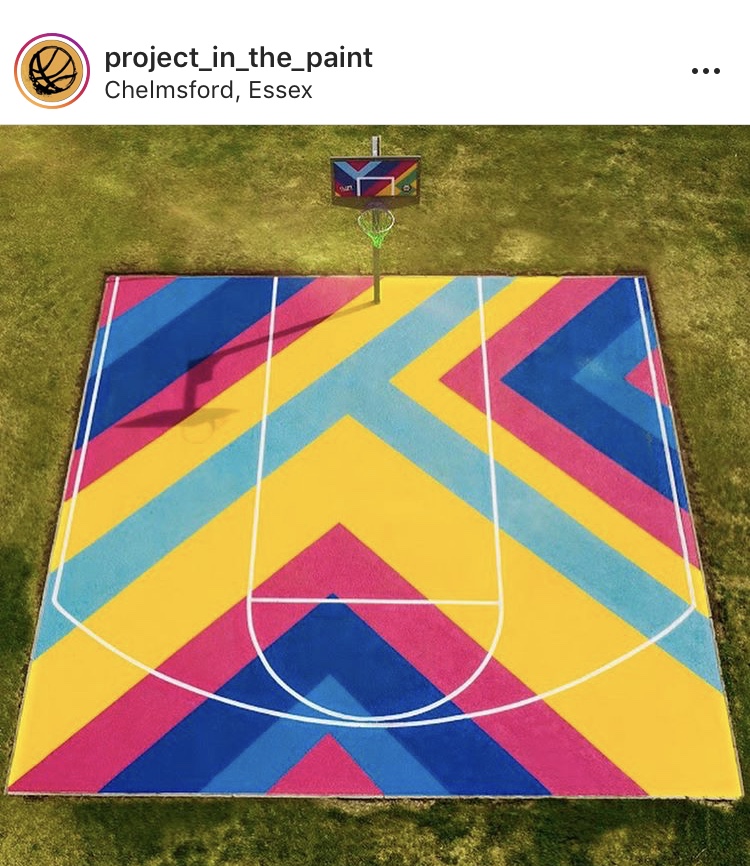
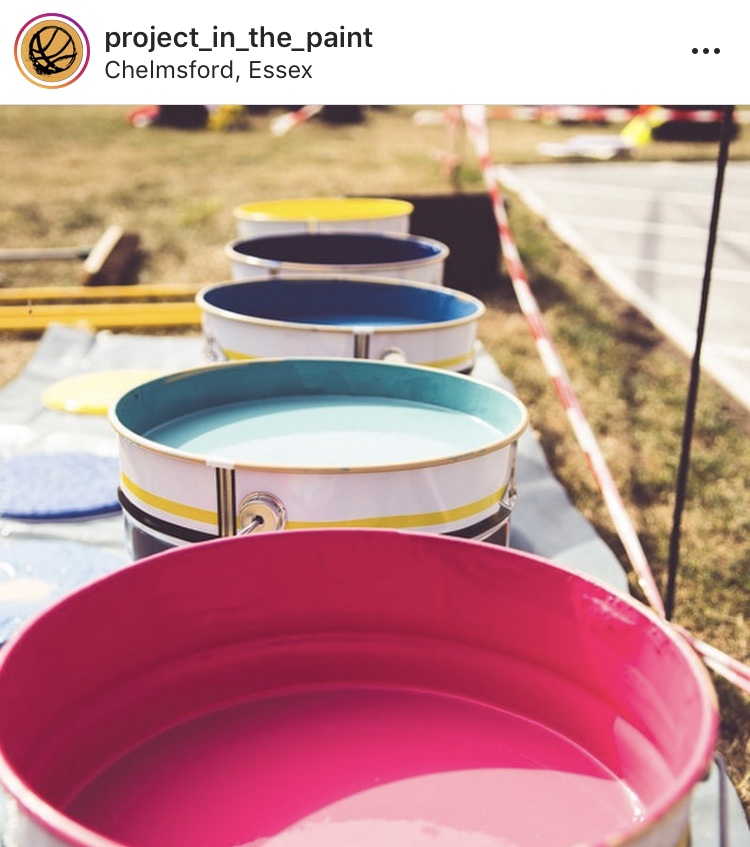
What Colour should Basketball Courts be?
Around the world, both indoor and outdoor basketball courts are being turned into works of art. After all, as long as they have the correct lines, the rest of the court is a blank canvas.
Paintmaster are proud to be providing artists with the paint to transform dull courts into amazing artwork that are as fun to play on as they are to look at. To see some of the projects we have been a part of you can check out our Facebook page and the artists’ Instagram.
Other Indoor Court Painting
Before starting your indoor court painting job, you should determine what the court is used for. Knowing both what lines will be needed, and how much wear the court will go through in the future. The latter can be an important factor as some types of paint are more hard-wearing and scuff resistant than others.
A court that is only used for a single sport, or only on weekends for example, could have cheaper paint that would wear out quickly if it were used more often.
Indoor Vs Outdoor Court Painting
Although both indoor and outdoor sports courts are similar painting jobs, there are some differences to keep in mind.
The main thing that separates the two types is the surface. It’s rare to find an indoor concrete court, most will have been resurfaced for safety purposes. If they haven’t, the owner should consider resurfacing before making the decision to paint.
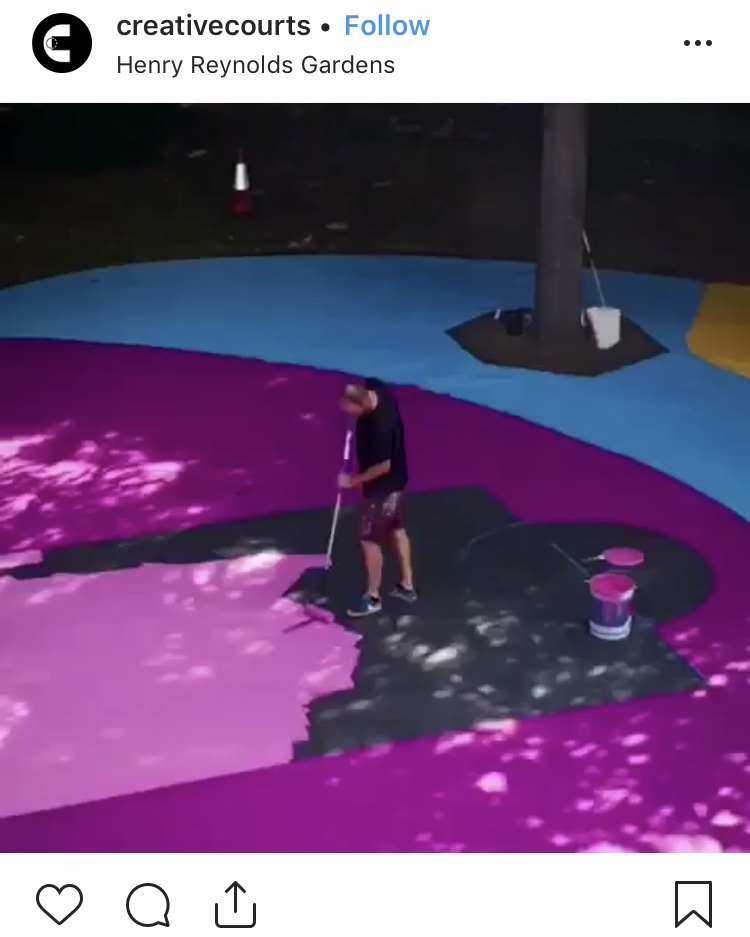
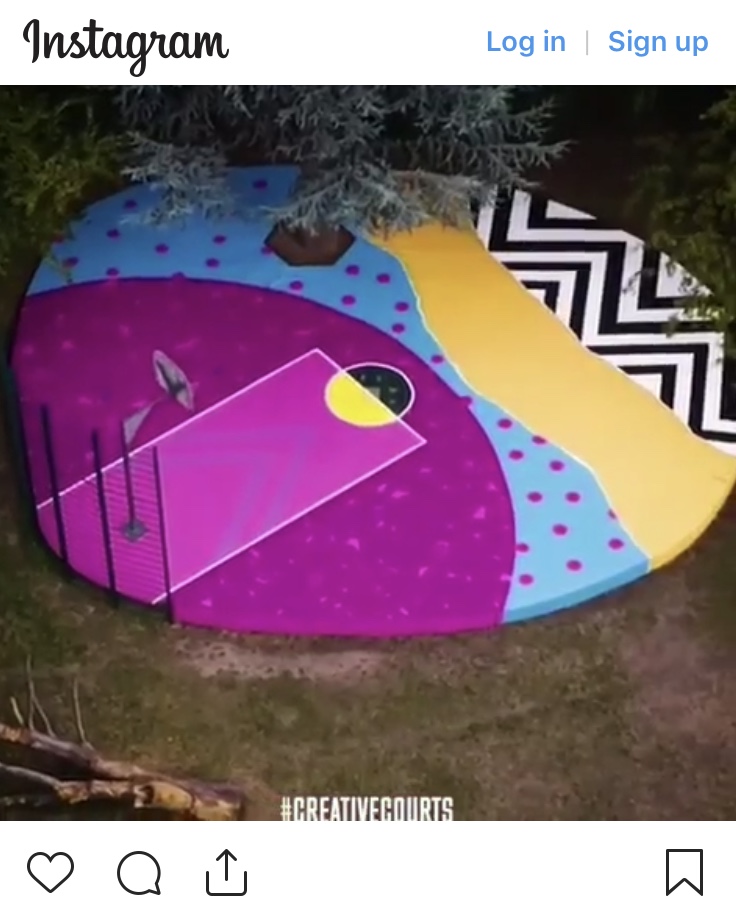
How to Paint Sports Courts
Once you have your paint ready to go, it’s time to start painting. Here are some Paintmaster top tips to get the best results:
Practice Beforehand
As with any painting job, you need to be sure that the final result will look great. Start by painting an inconspicuous area first that can be easily corrected or removed. If you are doing more than just one colour, you can use a stencil to see how well the colours look next to each other. To remove the stencil marks, just use paint thinner.
Once you’re done, no matter how it looks, leave the paint for 24 hours to dry and settle. Then you can see how well it looks in different light, if it reflects the sun or overhead lighting, and the surface texture. If it is slippery underfoot, try adding silver sand or builder’s sand to reduce this.
Practicing on a small scale also helps with mixing the paint, as you’ll see immediately if it is undermixed and if any added sand is still in clumps. It can take a while to get the perfect consistency, which is very important for sports courts.
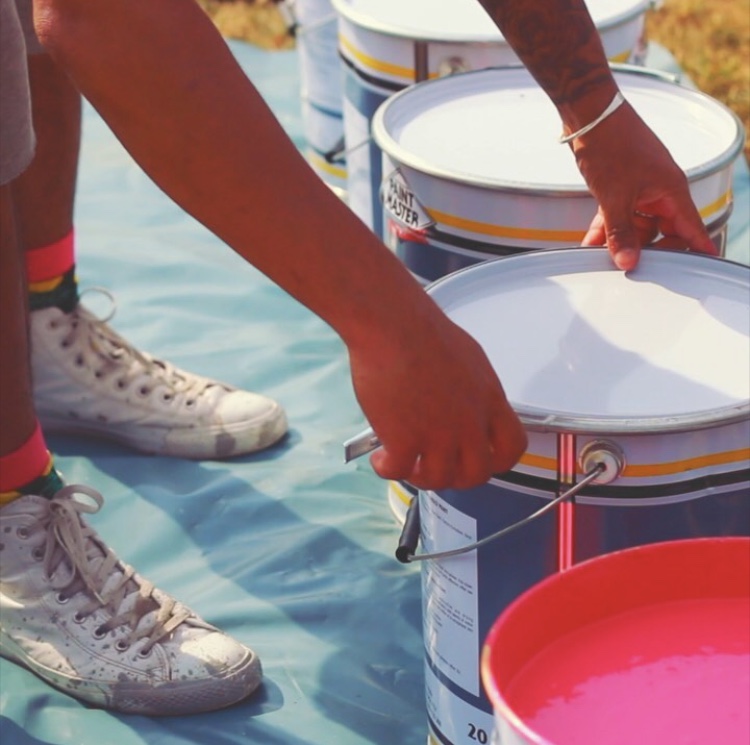

Apply an Undercoat
An undercoat is essential for any painting job if you want the best finish possible. For a large project it can seem expensive but is always worthwhile. Undercoats prevent flaking and reduce wear from foot traffic. If the paint wears away just from people walking on it, imagine what a fast-paced basketball game would do!
Use the Right Equipment
For painting large areas, you have a choice: paint rollers or sprayers.
Rollers are a proven choice and give you plenty of control over the thickness of paint so there is minimal wastage. If the paint is too thin, you’ll need a time-consuming third coat. Knowing how much to load onto a roller is an invaluable skill.
Sprayers make the work a lot quicker and easier, but can create a lot of mess if you haven’t used them before. They are great for large areas, but for the edges and lines, you’ll still need a brush or roller. Be aware that they can spread the paint thinner than a roller, so make sure the thickness matches across the court.
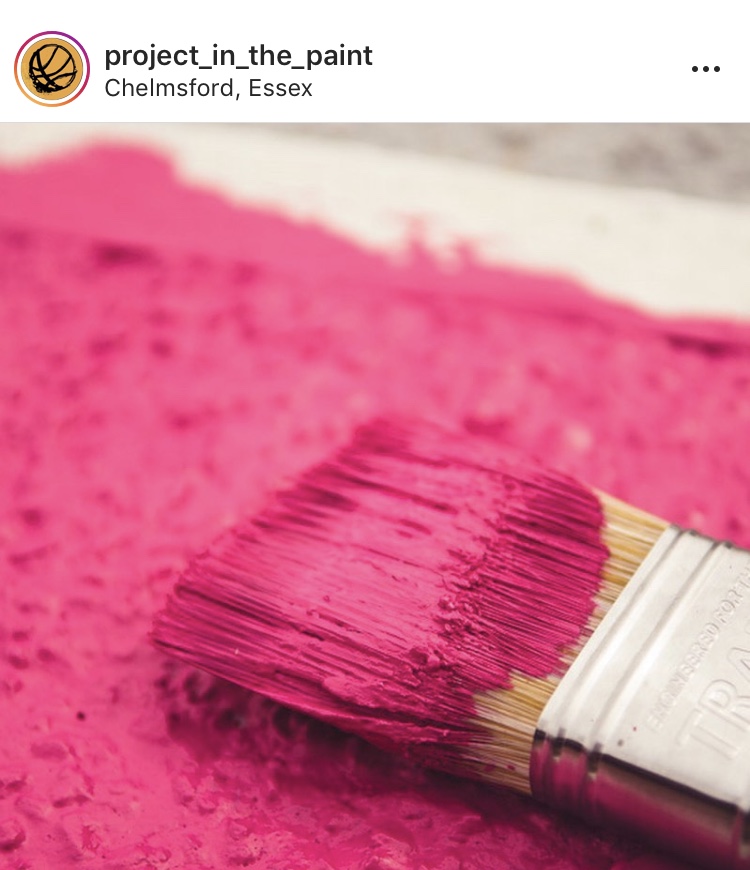

Make Clean-Up Easier
Even for outdoor jobs, you should use drop-cloths or dust sheets to reduce the mess. Remember, you want your edges to be straight, with no overlap or splashes around them. When painting your lines, be sure to protect the rest of the court and the area around it, white paint will stand out against any colour!
We always recommend keeping your paint brushes and rollers as clean as possible when you’re not painting, and make sure you start with a brand new one too.
Ready to get Started?
Whether you are a contractor, artist, or just doing something for your community, painting a sports court is always rewarding. Smaller painting jobs can be fiddly, so if you want something larger scale to hone your skills, look no further.
Paintmaster not only supply paint for artists, tradespeople and homeowners across the world, but always provide faultless service and quality painting accessories.
To find out more, please get in touch. Or you can check out our blog for more painting guides.
We look forward to hearing from you!
FAQ's
Can I paint my own tennis court?
With quality paint and painting supplies, anyone can paint a tennis court or sports court. We recommend using a roller or paint sprayer to cover the large areas, with a brush for the lines and edges.
How long does tennis court paint last?
If paired with an undercoat, quality sports court paint will last for around 5-8 years before it needs a fresh coat. This is much cheaper than resurfacing and will extend the lifespan of the court.
What is the best sport court paint?
We recommend acrylic paint for sports courts, both indoor and outdoor. It provides excellent protection from wear and weather, and has a low sheen, meaning the court won’t reflect light. You can also combine it with sliver sand or builder’s sand to reduce slippiness.
What is used to paint tennis courts?
The best paint for tennis courts needs to protect the surface, repelling any standing water so it can be brushed away easily. Acrylic paint or oil-based paints are best at this, with the former providing bold colours with low sheen, meaning no glare for players or spectators.
What kind of paint do you use on a sport court?
Sports courts need bright colours that take a long time to fade. Acrylic is the best of both worlds, but latex, epoxy resin, and oil-based paints all have their advantages too.
